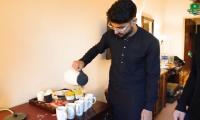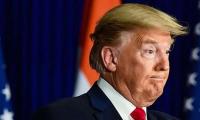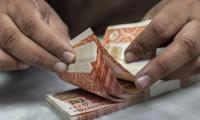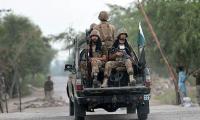“No understanding of contemporary Pakistan is possible without an historical analysis of the first decade after independence, a period of relative flux in the institutional balance of power between elected and non-elected institutions….the central concern is to show how the imperatives of the international political and economic system combined with regional and domestic factors in defining the nature of the Pakistan state” (emphasis added).
Thus wrote the formidable academic sage of our age, Dr Ayesha Jalal, in her path-breaking book, ‘The State of Martial Rule’, published nearly two decades ago. The fascinating framework to study politics of Pakistan is as relevant today as it is for unravelling that decisive phase in our history (1948-58) when so much right could have been done to fashion this country according to its founding ideals but we missed the boat – an omission that continues to haunt our political, social and economic existence.
Among other things, Dr Ayesha’s thesis distinguishes between the phases of dominance and actual military interventions and rejects the standard view (hugely popular even now) that the weakness of political parties leads other forces to take their place. Her research shows how global interests interact with regional realities and how these in turn impact Pakistan’s politics.
This holds good in today’s Pakistan as well. Here internal political fragmentation, turmoil and uncertainty are set in the context of critical regional events and global happenings which have pushed the country in the square middle of practical martial rule. While Panama, judicial hyper activism, and endless sparring among politicians are events whose sights and sounds keep a baffled public busy, bigger realities are at work that cannot be ignored if one were to develop a fuller picture of this domestic mayhem.
Among the external factors that are most important in deciphering the mysteries of national politics of today’s Pakistan, MBS’ Saudi Arabia and the UAE are arguably most pertinent. The expanding cold war between the Arab group of states against Iran has now come to the fore. The Saudi crown prince has taken the world by storm by not only recasting the image of his country but also putting on the table his list of enemies and friends. His global tour is laying bare how he sees the coming decades for this country and where his guns will be trained. Iran is the enemy. Israel is a friend. So is the US, most certainly. Turkey is yet to be defined but perhaps in the months ahead Ankara will be standing close to Tehran from Riyadh’s point of view.
The UAE is an active participant in this melting pot of the old monarchical way of speaking and working through silence. It is speaking up through its actions in alignment with Saudi Arabia, and sometimes ahead of it. Trump’s America is now cemented by the arrival of a warmongering John Bolton in the crucial post of national security advisor. From here it is but inevitable that the push against Iran will be done by fully endorsing the Saudi and UAE worldview of the Gulf and the Middle East. Iran will stay as factor number one in this game of checkmate, choke and kill.
Having traditionally hitched its wagon with the Saudis, Pakistan has attempted to somehow stay clear of saying yes to the clear-cut demand from this long-lasting benefactor to stand openly and decisively against Tehran; however, these efforts have not been successful.
It is only in retrospect that we can truly appreciate the strategic nature of the decision to allow General Raheel Sharif to become the head of the so-called Coalition of Islamic countries against terrorism. While domestically most of us saw this move as a personal agenda that a powerful man of his times was able to pull off for himself, the reality is that this was the most significant turn in Islamabad’s alliance with Saudi Arabia and one that radically changed the Saudi view of Pakistan’s internal dynamics. Their strategic partners were not sitting in the country’s parliament, which had opposed the idea of sending forces to the Saudi-led war in Yemen. In traditional Arab psyche, a million sacrifices are worth nothing if one is declined in need. And the civilians had turned out to be a disappointment.
The new construct of Saudi-Pakistan relations brings the prospect of aid and cash flow into the country – pre-conditioned, of course, to how enthusiastically we contribute to the Saudi and UAE designs in the Middle East and Gulf region. These are big decisions for Pakistan – and certainly not easy ones. Can they be taken up in open and candid debate in a freely-elected parliament? Is there room for the country to get involved deeper and deeper in the Middle East’s affairs and continue with the mantra of being neutral and not let deep public and sectarian conflicts take birth? Can the civilian leadership, which has to look towards its constituency, really be trusted with endorsing pre-decided agreements and commitments? Of course not.
Bolstering the influence of the state vis-a-vis civilian elected representatives is also the US factor under Trump. This administration offers both existential challenges to Pakistan as well as opportunities to sort out long-lasting issues – Afghanistan and India sit at the top of the list. The Trump Administration is never averse to considering the prospect of a good deal; consider the North Korea turn-around. The US now wants to settle Afghanistan’s expansive disorder to some kind of a manageable, even if partially chaotic, political solution. Pakistan is key to that process. If Pakistan can ease Washington’s pain in Afghanistan, Washington can help ease pressure on the Line of Control and the Working Boundary besides knocking out terror sanctuaries inside Afghanistan, from where most of the suicide bombers come.
Maybe in the fullness of time, and depending on the happenings in Afghanistan’s fragile peace process, Delhi and Islamabad could be made to sit together around a table (using also the quiet but effective offices of Israel as well since it has enormous clout with India) and hammer out another bid for peace. The early signs of this nascent arrangement are interesting. Ever since the Afghan peace push has picked up some steam, LoC has calmed down. (It’s fine if you didn’t notice. It has been a month, though). The PM’s Kabul dash and the string of US visitors to Pakistan are all part of an elaborate attempt to work out a deal on Afghanistan. Washington is dealing directly with the powers that be in Pakistan. It does not concern itself with who they are as long it gets what it wants out of this engagement.
Unsurprisingly, Chinese trade and economic interests too rhyme with a one-window operation in Pakistan. They have a huge financial stake in the country. Also, given their experience back home, stability (and not political wrangling) is the key to ensuring maximum results within the given timeframe of a project like the CPEC. They have neither the time nor any inclination to explain a million grey areas in the project and be available to answer, in a democratic setup, queries from provinces, districts and even union councils, about the downside of their growing business influence in Pakistan. A democratic system that hampers their onward march to warm water ports and the continents beyond is a needless superfluity. They want their job done and are with those who would do it for them.
This regional and global confluence of interests (admittedly oversimplified in many respects) bodes ill for Pakistan’s internal power balance. Our entire history is guide to the fact that whenever strong global and regional forces either collided or colluded the result was always marginalisation of civilian setups and ascendency of the state structure that was formed in the early years on account of these external pressures. The Ayub, Zia and Musharraf eras and their civilian facades were not just outcomes of domestic realities but products of an international system that promoted and sanctioned a particular type of domestic reality in the country.
With the next election barely two months away, the pulls of the international and regional forces are too strong to be ignored. What comes out of these elections will be the outcome not only of the voters’ choice but of the choices that the state of Pakistan and its movers and shakers make. At least, this is how the present and future look like if you apply the framework of assessment created by Dr Ayesha Jalal, which takes you way beyond the trash and tosh generated in the name of analysis every day and helps you understand what is happening in Pakistan now.
The writer is former executive editor of The News and a senior journalist with Geo TV.
Email: syedtalathussain@gmail.com
Twitter: @TalatHussain12
An aeroplane of the national flag carrier of Pakistan is seen in this file photo. — AFPWhile Pakistan considers...
Representational image of a graph depicting various variables. — APP/FileInitiated by the centre and fiercely...
In this picture taken on April 16, 2023, people throng a market area during shopping in Lahore. — AFPOne of the...
Honour crimes also target men. In Sikandar Ali Lashari vs The State, SHC upheld conviction passed by ATC for honour...
If Sindh earmarks Rs20 million per police station, it will cost only Rs10 billion to make them effective first...
A complex and difficult policy environment seems to be highlighted by US’s recent application of sanctions on...







